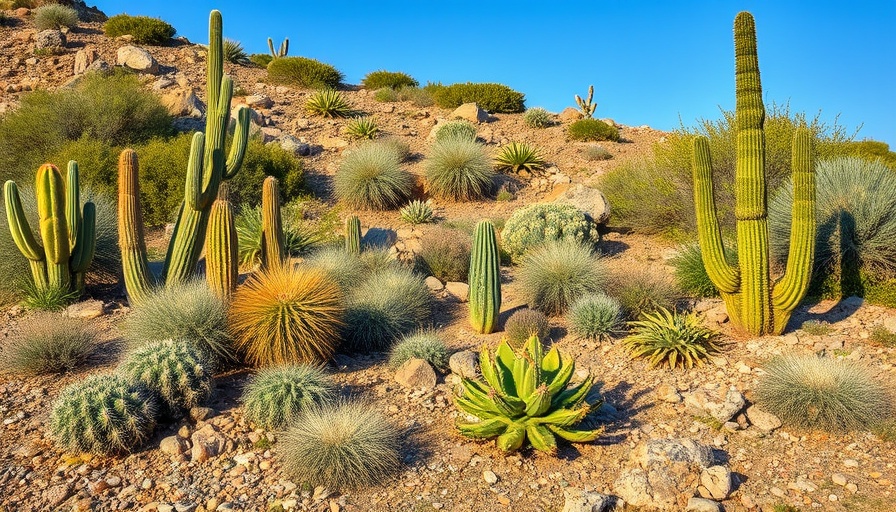
Discover the Beauty of Xerophytes in Your Garden
When imagining a garden that thrives on minimal water, many people immediately think of cacti and tough succulents. However, the world of xerophytes—plants well-adapted to dry conditions—offers more than just prickly cacti. In reality, these stunning plants encompass colorful flowers, vibrant herbs, and even majestic trees. Whether you're living in a dry climate or not, incorporating xerophytes into your garden ensures that you play your part in conserving precious water resources.
Why Choose Xerophytic Plants for Your Landscape?
With dwindling global water supplies, adopting water-wise gardening practices has become more important than ever. Xerophytes endure periods of drought by efficiently storing water, making them indispensable for maintaining a beautiful landscape without excessive irrigation. Beyond their drought-resilient qualities, these plants also add aesthetic diversity to your garden. Imagine a landscape filled with the striking hues of California poppies and the soothing greens of Mugo pines contrasted with the ornamental spines of prickly pear cacti. Not only do these plants stand resilient, but they can also dramatically transform your outdoor space.
Top Xerophytes to Consider for Your Garden
If you're on the lookout for the best xerophytes to fit your gardening vision, look no further than our handpicked selection. Here are a few standout plants:
- American Agave: An eye-catching centerpiece that can tower up to 10 feet and produces a stunning flower stalk that reaches 20 feet in height.
- Olive Tree: This classic tree not only shines in its drought tolerance but also offers delicious fruits.
- Pomegranate: A beautiful addition that provides vibrant flowers and juicy fruits, suitable for a resource-efficient garden.
- Kalanchoe: Known for its drought resistance and colorful blooms, perfect for garden borders or pots.
- Texas Sage: This shrub thrives in dry conditions and boasts beautiful purple flowers.
Creating Your Water-Wise Garden
As you embark on your journey into xerophytic gardening, it’s essential to consider a few critical aspects:
Design Principles
Start by mapping out your garden space. Identify areas that receive full sunlight, partial shade, and those that tend to stay moist. This can help you determine where different xerophytes will flourish best. Group plants according to their water needs while taking care to allow for proper air circulation.
Soils and Irrigation
A well-draining soil is crucial for xerophytes, ensuring they don’t sit in waterlogged conditions. Consider incorporating sand and gravel into your garden beds. Additionally, drip irrigation systems can help deliver water directly to the roots, minimizing waste and ensuring efficient moisture delivery.
Mulching for Moisture Retention
Using organic mulch not only conserves moisture but also suppresses weeds, enriches soil as it decomposes, and gives your garden a neat appearance. Mulch around your plants to keep the soil temperature regulated and consistent.
Empowering Your Gardening Experience
Xerophytes represent a vital step toward sustainable gardening practices. By selecting these plants, you're not just beautifying your environment; you're positively impacting the ecology around you. Acquire knowledge about the natural habitats of these species, which can offer insights into their care and nurturing needs.
Conclusion: Design a Sustainable Oasis
Transforming your garden into a xerophytic haven can be both fulfilling and beneficial. Explore different xerophytes that appeal to your aesthetic and germinate a water-wise environment. The journey to create a sustainable landscape can inspire not just your garden, but also serve to educate others about the importance of water conservation.
 Add Row
Add Row  Add
Add 




Write A Comment